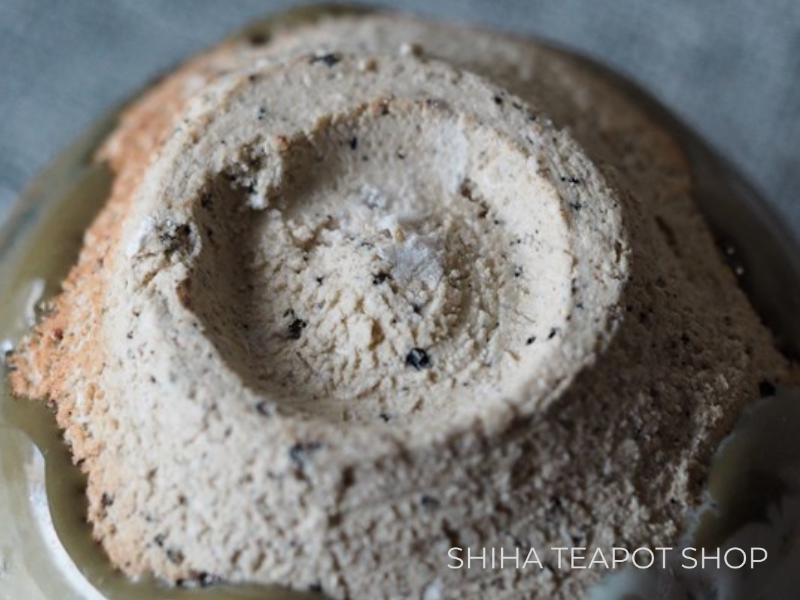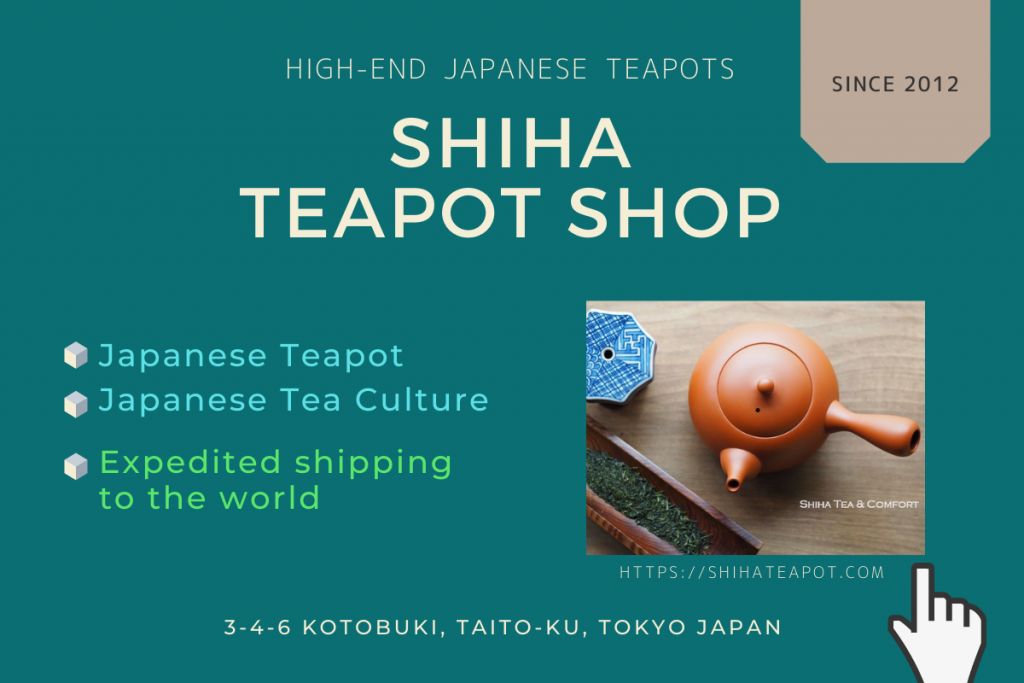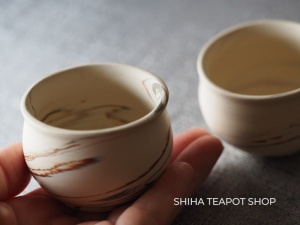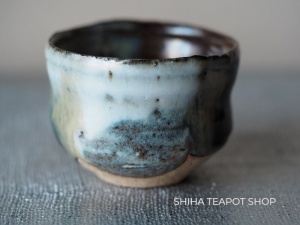Japanese Ceramic Ware and Medome (Sealing)
Contents 目次
Rough and Delicate Beauty of Clay
Rough soil/clay such as Hagi and Shigaraki looks soft and they have very natural and special beauty.
Furthermore, firing them at a lower temperature gives them softer, more delicate apprearace.

Photo: Takatori-yaki cup (Kodai foot)
It brings feeling and impression such as rough, delicate, natural, like nature landscape, uniqueness (only one), tasteful, made by hands, warm, wabi-sabi..
Porous and Medome (Sealing)
In that case, these ceramic works have weak bonds between the soil particles, and the ground is porous.
In the case of tableware and tea ware, tea or food may seep into these holes and stain the utensils.
Also, in the case of flower vases, water may gradually seep through the vase and cause water stains on the table and floorboards.
For those pottery, there is a custom to do Medome (sealing) first and then use.
Modern Lifestyles – Everyday Tableware
However, nowadays, in line with modern lifestyles, ease of use is prioritized,
production techniques have been devised, and many dishes/cups that do not require maintenance or special care, especially for everyday tableware, are being produced.
Medome Recommendation
But still, there are many pottery production areas that recommend Medome(sealing) to prevent stains, oil absorption and stain even in everyday tableware.
The same is true is the of pottery made with a technique called “kobiki”.
2 kinds of Potteries
In other words, there are potteries that require Medome (sealing) and those that do not require.
Depending on the type of clay and the method of firing, required handling of the pottery to change.
Balance of Beauty and Ease of Use
Ceramic artists need to create pottery that are both beautiful and easy to use.
However, there are times when the natural texture and beauty of the soil is better preserved, and as a result, it may become a vessel that requires Medome (sealing).
It is a Old Custom of Japan
The custom of Medome(sealing) has existed since old times in Japan.
How to do Medome (Sealing)
This is the way I do for Medome(sealing) for a cup to prevent stains, oil absorption, and water steep out.
1. Measure your cup weight with your scale if you have . (See how many gram)
2. Put the cup and water in a pan/pot. Water should cover the cup. (You can put paper towels under and around the cup to protect it from contact between the cup and the pot. It’s also okay not doing it )
3. Take out the cup once.
4. Put starch in the pot and stir and blend with water (About 20- 30g)
5. Put back the cup into the pot
6. Heat the pot with low fire/low heat (do not boil water to avoid damage the cup)
7. Soak and heat the cup 20-25 min of in the starch hot water. Watch the status of water and cup (you can add some more time considering water temperature is low at beginning)
8. Turn off the heat
9. Leave the cup in the pot more than 8 hours.
——————————————————-
10. Take out the cup from the pot and wash it thoroughly (It is sticky all over, so wash every detail)
11. Measure the weight of the cup (The cup contains starch water it should be heavier)
12. Dry the cup thoroughly over several days.
(Measure the cup weight sometime to see if the weight is decreasing. If it stops decreasing, you may see it is dried well. )
(It sometimes take around one week)
13. Test the cup with filling water, use it if is OK for you.
For your reference, some potter says, it is OK to boil and reach 100 degrees and it will be fine. This is just to tell there are many thoughts about it.
Failure of Medome (Sealing) ?
In case, the clay of your cup/vase are too rough and water in the cup/ vases gradually could seep through the vessel even after medome (sealing) . It may require twice or three times of Medome (sealing). Sometimes it cannot seal completely even three times.
I once experience it with an antique after Medome. A few minutes after poring tea in the cup, the table under the cup started to get wet, and if I waited even longer, water accumulated. How I treat this cup, please see next chapter.
Unique Value of Wabi-Sabi & Leaking
This cup has rough and simple soil that has indescribable rustic beauty.
This cup is a small, it holds only approx. 30ml of water. Since the custom of tea drinking, I don’t keep the tea liquid in the cup so long, usually drink up in short time, therefore there is actually not so problem when using it.
Moreover, there are certain kind of people who appreciate wabi-sabi admire this kind of soil and find of joy in the way the water seeps out. They discover nature in the characteristics and conditions of soil, like water seeping out of rocks in a mountain.
Thank you very much for reading. This article was written to tell overview of Medome custom in Japan. Hope you find some clue about Medome (sealing).



